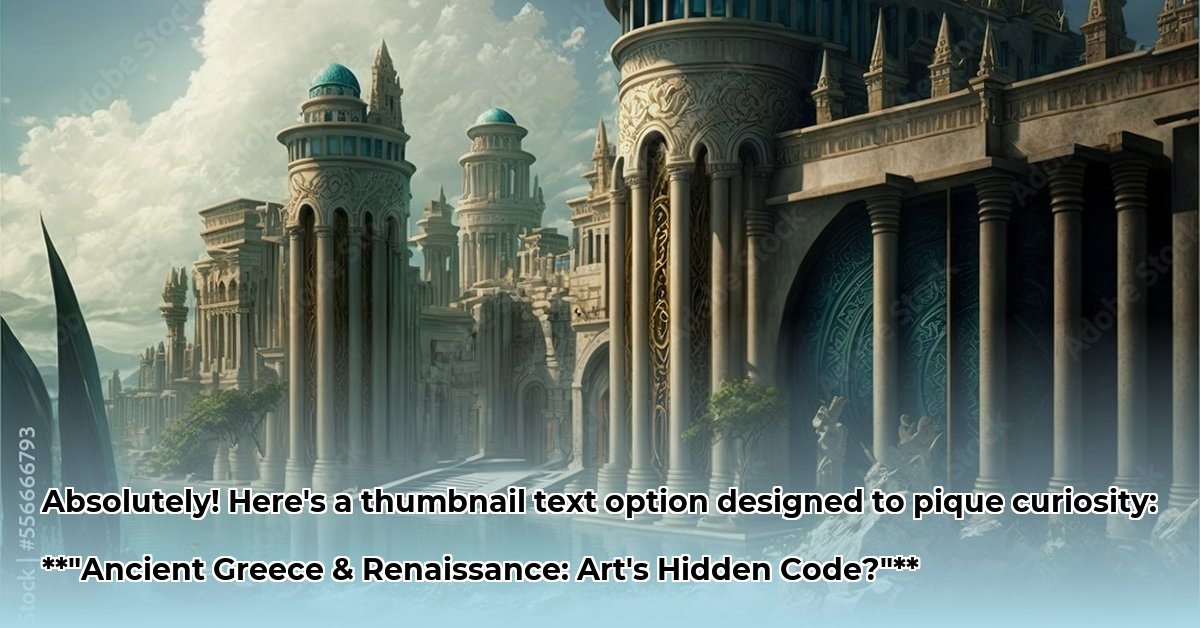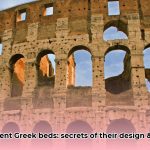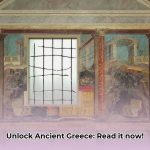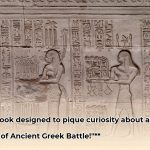Ever wondered about the foundational ideas that shaped our understanding of beauty in art and philosophy? Many of these concepts trace directly back to ancient Greece. While the Greeks didn’t formalize “aesthetics” as a distinct philosophical discipline until much later, their profound engagement with beauty, proportion, harmony, and the human form laid an indispensable groundwork for Western art and critical thought. These principles experienced a powerful resurgence during the Renaissance and continue to echo in contemporary artistic expression. This article delves into the core tenets of ancient Greek aesthetics, exploring their philosophical underpinnings, their remarkable evolution from idealism to realism, and their persistent influence across millennia. You can explore more about ancient Greece art online.
The Genesis of Enduring Beauty: Ancient Greek Aesthetic Foundations
To truly grasp the essence of timeless beauty in Western tradition, one must journey back to ancient Greece. The ancient Greek aesthetic transcends mere visual appeal; it embodies a sophisticated philosophy that defined beauty, balance, and profound meaning. This historical framework has served as a consistent guiding principle for artists and thinkers, fundamentally influencing how we perceive art, architecture, and even our most idealized understanding of the human form.
Some scholars, notably Oskar Kristeller, have argued that applying the term ‘aesthetics’ to ancient thought is anachronistic, as the discipline formally emerged in the 18th century. However, compelling counter-arguments suggest that ancient Greek and Roman philosophers extensively discussed and theorized about the nature and value of aesthetic properties, contributing directly to the later traditions. Regardless of nomenclature, their rigorous examination of beauty is undeniably a cornerstone of aesthetic inquiry.
The Unbreakable Trinity: Proportion, Symmetry, and Harmony
At the very core of the ancient Greek aesthetic lies an unwavering appreciation for proportion (summetria), symmetry, and harmony. The Greeks believed that beauty was not arbitrary or purely subjective but could be mathematically quantified and universally defined. This conviction led to the meticulous application of principles derived from observation and reason, rather than fleeting trends.
A pivotal element was the concept of summetria, meaning not merely bilateral symmetry, but “good, appropriate, or fitting proportionality.” This idea permeated every aspect of their artistic and architectural endeavors. The Parthenon in Athens stands as an unparalleled testament to this. Its remarkable balance, visual harmony, and perceived perfection are direct results of meticulously calculated mathematical dimensions and subtle optical corrections. Every column, every frieze, and every pediment was conceived in precise relation to the whole, cultivating an overriding sense of visual harmony that remains captivating today.
Sculptors, most notably Polykleitos, rigorously adhered to these principles of proportion. His renowned sculpture, the Doryphoros (Spear-Bearer) from approximately 450-440 BCE, embodies his theoretical treatise, the Kanon (Canon). It represents the quintessential human form, with each muscle and limb meticulously balanced according to specific mathematical ratios. For instance, the length of the foot was often a sixth part of the body’s height, and the forearm a fourth. Beyond mere physical appearance, the Greeks embraced the concept of Kalokagathia, signifying the pursuit of both physical excellence (kalos) and moral goodness (agathos). They genuinely believed that a beautiful physique mirrored a noble soul, and vice versa, creating a holistic ideal of human perfection.
Philosophy’s Crucible: Where Beauty Met Truth and Purpose
The ancient Greek aesthetic was never solely focused on visual appeal; it was deeply interwoven with philosophical ideas concerning beauty, truth, and the fundamental nature of reality. Philosophers such as Plato and Aristotle extensively explored these concepts and their profound relationship to artistic expression and human well-being.
Plato’s Ideal Forms and the Ladder of Love: Plato, while captivated by beauty, famously approached art with a degree of skepticism. He posited that true beauty resided in a realm of perfect, eternal Forms, asserting that physical beauty was merely an imperfect reflection or “copy” of this higher, transcendent reality. In his Symposium, Plato describes the “Ladder of Love,” a spiritual journey where an individual ascends from appreciating physical beauty to understanding the beauty of minds, institutions, knowledge, and ultimately, the pure, unchanging Form of Beauty itself. For Plato, observing a beautiful sculpture or a harmonious melody offered a glimpse into something genuinely divine, drawing the soul closer to ultimate truth. However, his strong critique in Republic Book 10 warned against the deceptive nature of artistic mimesis (imitation), which he believed could distract from true knowledge by presenting mere appearances.
Aristotle’s Empiricism and the Power of Catharsis: Aristotle, Plato’s student, adopted a more empirical and earthly approach to beauty. He contended that beauty emerged from the harmony, order, and appropriate scale inherent in the material world. For him, knowledge was acquired through sensory experience, and art, while imitative, served a beneficial purpose. In his Poetics, Aristotle explored the emotional impact of art, particularly the concept of catharsis. He described tragedy as evoking pity and fear in the audience, only to then purify or purge these emotions, leading to a sense of renewal and understanding. This idea highlighted art’s capacity to engage with and process profound human experiences, rather than merely distracting from reality. Aristotle also valued mimesis, seeing it as a natural human inclination that facilitated learning and delight, distinguishing effective artistic imitation from mere copying.
It is compelling to consider that these ancient thinkers regarded art as far more than mere decoration. They viewed it as a potent force capable of shaping our comprehension of the world, our emotions, and our very selves, intricately linking it to ethics, politics, and the pursuit of flourishing.
The Visual Narrative: Idealism vs. Realism in Ancient Greek Art Evolution
Another compelling aspect of the ancient Greek aesthetic is the dynamic tension and eventual synthesis between idealism and realism. Did they aim to depict the world precisely as it was, or as it ideally should be? The answer evolved significantly over centuries, reflecting shifting cultural values and artistic mastery.
Tracing the Roots: From Abstraction to Early Naturalism
The artistic journey in ancient Greece began with fundamental shapes and lines. The Geometric period (c. 900–700 BCE) witnessed a flourishing of artistic expression following the Bronze Age collapse. Vases were adorned with intricate meanders, chevrons, and highly stylized human and animal figures, often arranged in funerary lamentations or battle scenes. Small, often abstract, sculptures were crafted for sacred rituals.
As Greek society advanced, so did its artistic endeavors. The Archaic period (c. 700–480 BCE) introduced more lifelike figures and marked the inception of narrative storytelling within art. The kouros (nude male youths) and kore (clothed maidens) statues from this era were instrumental in this development. While often rigid and frontal, their forms signaled a significant leap in understanding human anatomy, though still characterized by the enigmatic “Archaic smile.” Simultaneously, black-figure and later red-figure pottery styles enabled artists to portray mythological scenes, daily life, and athletic contests with increasing fidelity and emotional nuance, capturing the dynamic motion of figures.
The Classical Peak: Idealism Takes Center Stage
Next came the Classical period (c. 480–323 BCE), widely recognized as the zenith of Greek artistic achievement. Guided by visionaries such as the sculptors Phidias, Myron (creator of the Discobolus or Discus Thrower), and Polykleitos, art during this era epitomized harmony, balance, and perfect proportions. The Parthenon in Athens, completed in 438 BCE, stands as an enduring testament to this period’s artistic and intellectual prowess. Its majestic Doric architecture and the sculptures—such as the Elgin Marbles (Parthenon Frieze)—celebrated for their meticulous artistry and idealized beauty, capture human grace and dignity in motion. This was undeniably a golden age where architecture achieved a delicate equilibrium between utilitarian function and profound visual appeal, often subtly incorporating optical refinements to appear perfectly straight. Vase painting further evolved, intricately weaving complex narratives with refined skill, achieving a new level of naturalism in drapery and pose.
Hellenistic Shift: Embracing Realism and Intense Emotion
Then emerged the Hellenistic period (c. 323–31 BCE), a direct artistic consequence of Alexander the Great’s widespread conquests, which spread Greek culture across vast territories. This epoch was characterized by dramatic expression and meticulous detail, exhibiting a notable inclination towards heightened realism and emotional intensity. Hellenistic art powerfully reflected this cosmopolitan world, revealing a heightened degree of psychological complexity and a broader range of subjects, including the elderly, children, and figures from daily life, not just gods and heroes.
A perfect illustration of this nuanced approach is the sculpture Laocoön and His Sons (c. 40-30 BCE). This dramatic masterpiece portrays a Trojan priest and his sons under attack by sea serpents. The sculpture is extraordinarily detailed and conveys intense anguish and struggle, pushing beyond idealized calm to encapsulate raw human emotion and suffering. Other notable works include the Venus de Milo, celebrated for its voluptuous form and graceful pose, and the Winged Victory of Samothrace, a dynamic depiction of triumph and movement. The increased naturalism and exploration of profound human emotions established the foundational groundwork for subsequent Roman art, which would often copy or draw heavily from these Hellenistic exemplars.
Roman Echoes and the Renaissance Revival: A Lasting Legacy
The influence of Greek art on Roman aesthetics was profound. Romans deeply admired and actively emulated Greek artistic traditions, often collecting Greek originals and commissioning myriad copies. They seamlessly integrated Greek styles and technical methodologies into their own distinct works, particularly in portraiture and public monuments. This powerful fusion gave rise to a unique stylistic blend that profoundly defined the aesthetic identity of the Roman Empire, extending the reach of classical ideals.
The Renaissance, literally a “rebirth” (c. 14th–17th centuries), marked a crucial turning point for the re-evaluation of Greek aesthetic principles. Driven by the rediscovery of ancient texts, philosophies, and sculptures (like the Laocoön in 1506), artists and thinkers enthusiastically returned to the Greek ideals of beauty, humanism, and harmonious proportions. Artists such as Leonardo da Vinci, Michelangelo, and Raphael meticulously studied classical anatomy and composition, seeking to recreate the idealized forms and dynamic narratives of Greek sculpture and painting. Michelangelo’s David, with its heroic nudity and idealized musculature, directly echoes the principles of Polykleitos’ Doryphoros, while architects like Brunelleschi and Palladio drew inspiration from the mathematical precision and classical orders of Greek temples to design buildings that embodied harmony and balance.
The legacy of Greek art persists vibrantly even today. Its core principles of symmetry, proportion, and harmony have profoundly shaped countless generations of artists, architects, and designers across the globe. By diligently striving to capture the profound essence of the human spirit—from divine perfection to poignant suffering—Greek artists laid the indispensable foundations for the entire Western artistic tradition. Their unwavering standards of beauty and excellence continue to inspire, challenge, and resonate powerfully, reminding us that true beauty often embodies balance, harmony, truth, and the relentless pursuit of excellence in every facet of life.
The Ancient Greek Art – Idealism vs. Realism Evolution represents far more than a mere aesthetic progression; it mirrors the profound aspirations and fundamental values of an entire civilization. The ongoing dialogue between idealism and realism, between philosophical inquiry and artistic expression, continues to shape how we perceive beauty, morality, and the fundamental essence of being human.















